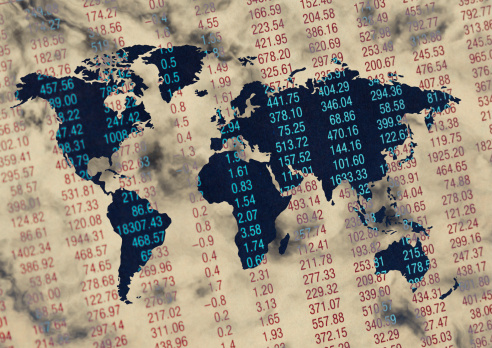
The September assessment shows just one country with an improved economic outlook for 2014 — India, up 0.8% — and one country where the outlook did not change — China. Brazil’s GDP growth forecast was cut the most, down from 1.8% in May to 0.3% in September. The outlook for Brazil’s GDP growth in 2015 also fell the most, from 2.2% to 1.4%.
As a whole, eurozone gross domestic product is expected to grow just 0.8% in 2014, down from 1.2% in the May assessment. The growth estimate for 2015 was also cut, from a May level of 1.7% to a September level of 1.1%. Among the eurozone nations, Italy is the weakest with estimated negative GDP growth of 0.4% in 2014 and positive growth of just 0.1% next year.
The OECD points out the obvious: “Continued slow growth in the euro area is the most worrying feature of the projections.” The report goes on:
The recovery in the euro area has remained disappointing, notably in the largest countries: Germany, France and Italy. Confidence is again weakening, and the anaemic state of demand is reflected in the decline in inflation, which is near zero in the zone as a whole and negative in several countries. While the resumption in growth in some periphery economies is encouraging, a number of these countries still face significant structural and fiscal challenges, together with a legacy of high debt.
READ ALSO: The Best Economies in the World
The other danger for the eurozone is deflation:
Excessively low inflation makes it more difficult to achieve the relative price adjustments that remain necessary to rebalance euro area demand without having to endure a prolonged period of slow growth and high unemployment. Inflation near zero also clearly raises the risk of slipping into deflation, which could perpetuate stagnation and aggravate debt burdens
Germany’s growth is now pegged at 1.5% in 2014, down from 1.9% in May and 1.5% next year, down from a prior estimate of 2.1%. GDP growth in France for this year is now estimated at 0.4%, down from 0.9%, and 1% next year compared with a previous estimate of 1.5%.
The United Kingdom’s GDP growth estimate dropped by just 01%, to 3.1%, for 2014 and was the only 2015 estimate to improve, from a May forecast of 2.7% growth to a September estimate of 2.8%.
For 2015 the OECD’s assessment of U.S. GDP growth rises to 3.1%, the best of any of the developed nations. Only China (7.3%) and India (5.9%) are forecast to post faster growth. In its assessment the OECD says of the United States, “Employment gains are set to continue, with business investment likely to strengthen.”
READ ALSO: The Worst Economies in the World
Get Ready To Retire (Sponsored)
Start by taking a quick retirement quiz from SmartAsset that will match you with up to 3 financial advisors that serve your area and beyond in 5 minutes, or less.
Each advisor has been vetted by SmartAsset and is held to a fiduciary standard to act in your best interests.
Here’s how it works:
1. Answer SmartAsset advisor match quiz
2. Review your pre-screened matches at your leisure. Check out the advisors’ profiles.
3. Speak with advisors at no cost to you. Have an introductory call on the phone or introduction in person and choose whom to work with in the future
Thank you for reading! Have some feedback for us?
Contact the 24/7 Wall St. editorial team.


